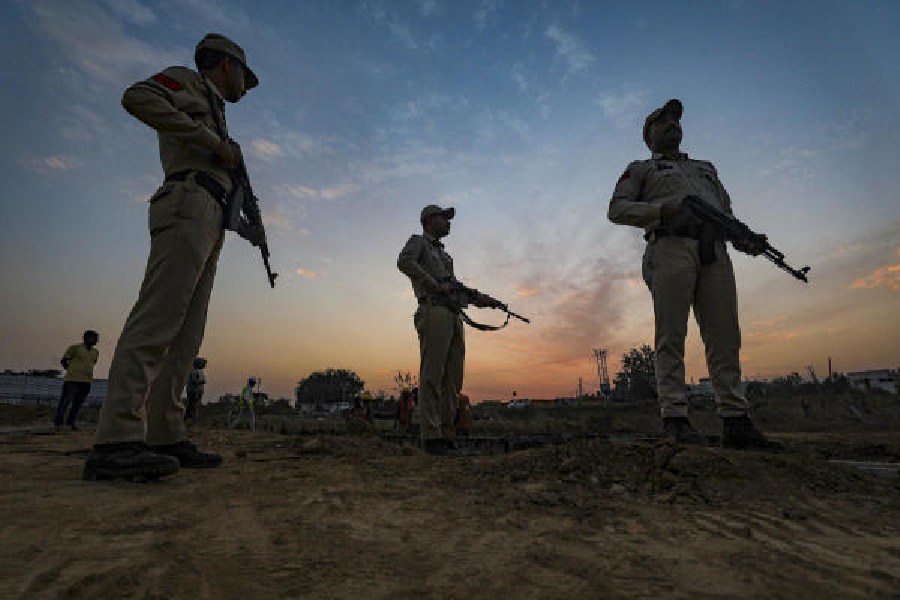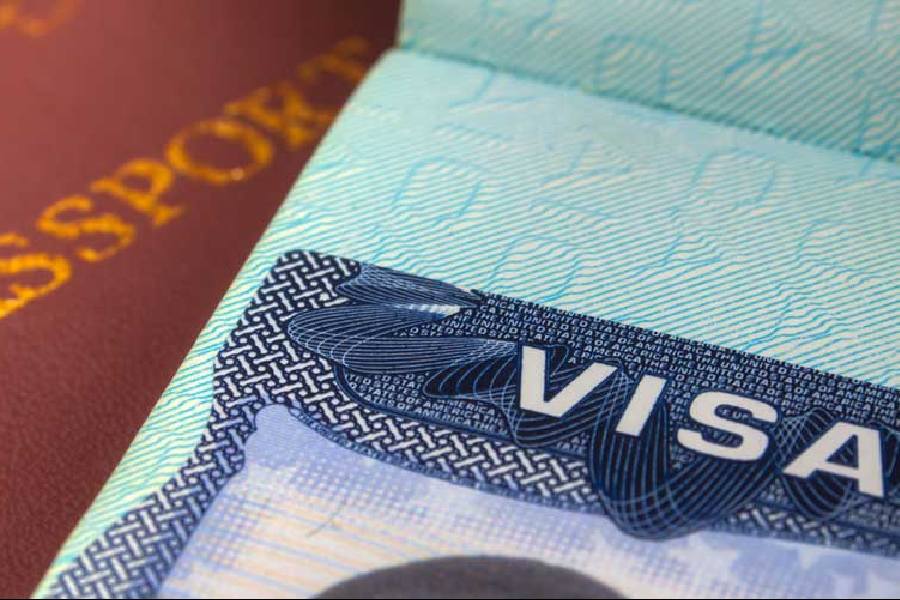 |
| Ramps like this one (at Edmonton International Airport in Canada) will help disabled people negotiate their way. (Reuters) |
Aug. 28: Wheelchair-borne Seema Khatun shudders at the very thought of venturing outside the four walls of her home.
It is not that she does not want to leave the “comfort zone” of her Khanapara residence and feel the heat and dust of life outside. For 36-year-old Seema, it is nothing short of a dream to move freely in her wheelchair in a city notorious for its unfriendliness towards its physically and mentally challenged population.
Her’s is not an isolated case. The disabled continue to remain an “invisible minority” at the bottom of the list of priorities.
“We cannot see them regularly in public places like roads, parks and on buses because these are not accessible to the disabled. Leave alone old buildings, even the newly constructed ones do not have any provisions for the disabled,” said Meera Kagti, a disabled rights activist.
Thankfully, there are exceptions.
Lokapriya Gopinath Bordoloi International Airport, for instance, is all set to become the first disabled-friendly zone in the city. It will provide a barrier-free zone for disabled passengers with reserved parking and drop-off area for their vehicles within 20 meters of the airport entrance. The area will be marked off with symbols and a system will be put in place to ensure that non-disabled people do not use the reserved parking space.
An information board carrying details of these facilities will be set up at the entrance itself, and appropriate signposts will be installed at various points inside the airport to help physically challenged passengers.
Introduction of Braille symbols, wider ticket counters and first hand help, ramps, railings, lifts and accessible toilets are other provisions to be put in place at the airport within a year’s time.
The steps are part of a major renovation scheme of the Airports Authority of India under way at the airport. AAI regional executive director (Northeast) V.P. Chaudhary told The Telegraph that the decision was taken based on an official request from the Disability Law Unit, Northeast, to make the airport disabled-friendly.
The unit was opened under the Shishu Sarothi, funded by Light for the World.
The disabled activists are optimistic. “At last a change appears on the horizon when the city’s disabled population can access public spaces without any constraints,” said Arman Ali, disabled activist and project co-ordinator of DLU.
“For the past several years we have been constantly trying to make the city disabled-friendly. We got a lot of help from non-government organisations and corporate bodies. We are happy that the AAI has honoured our request and will set an example for others to follow,” Ali said.
The DLU is now planning to request NF Railways to introduce similar changes at Guwahati railway station.
“We will also request the authorities of all educational institutes, government offices, shopping centres and prominent and historical places in the city to make them disabled-friendly,” said Anju Talukdar, assistant project co-ordinator of DLU.
Talukdar, who is also a legal expert on the disabled, stressed that Chapter VIII of the Persons with Disabilities (Equal Opportunities, Protection of Rights and Full Participation) Act, 1995, on Non-discrimination clearly enumerates steps that the state should take to make public places and the transport system barrier-free.
But in the gap between the written word and its implementation, it is the disabled who are left in the lurch.
The Vocational Rehabilitation Centre for Handicapped, Guwahati, has identified over 23,000 physically challenged persons in the state under five categories — orthopaedically challenged, hearing impaired, visually impaired, mild mentally retarded and leprosy cured. More than 14,000 reside in the rural belt. An estimate of city’s disabled denizens is yet to be made.
Many a disabled student is forced to drop out of school because of non-availability of facilities, activists pointed out. “This is an outright denial of the fundamental rights enshrined in the Constitution,” said Ali. “But we are hopeful that the city will turn into a better place for its disabled population one day.”
Assam commissioner for disabilities Prasanta Bora said, “As a nodal department, we issue instructions from time to time to the various departments to make public spaces accessible and barrier-free for disabled. We are also planning to write to the managing authorities of shopping malls, eateries, parks and cinema halls to sensitise them to the problems faced by the disabled in public places”.
Experts rued that the government departments concerned had failed to come up with a model plan to benefit the disabled.
A few years ago, the Centre had granted Rs 10 lakh to each state of the country to develop its own disabled-friendly model. Assam did not even take the grant.
REALITY CHECK
Is the city unfriendly towards its disabled population?
Total population of the city: 10 lakh
Disabled: An estimated 10000
Conspicuous by their absence in public spaces are:
- Ramps
- Railings
- Reserved parking/drop-off area for vehicles of people with disabilities
- Appropriate signboards at various points
- Lifts and accessible toilets
Ray of hope
A change is in the offing with LGB Airport planning to turn into the first disabled-friendly zone in the city










